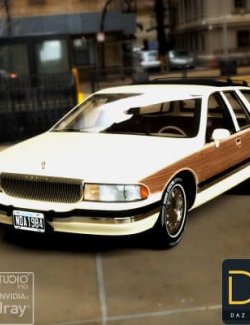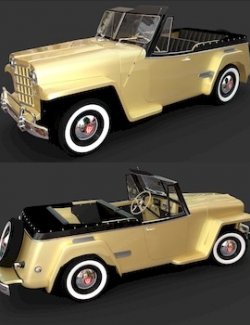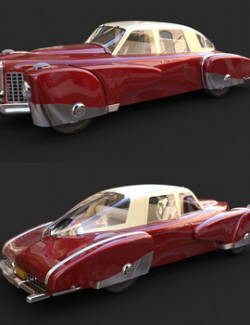The Ford Motor Company is an American automaker, the world's fifth largest based on worldwide vehicle sales. Based in Dearborn, Michigan, a suburb of Detroit, it was founded by Henry Ford on June 16, 1903. Ford Motor Company would go on to become one of the largest and most profitable companies in the world. The largest family-controlled company in the world, the Ford Motor Company has been in continuous family control for over 110 years. Ford now encompasses two brands: Ford and Lincoln. Ford once owned 5 other luxury brands: Volvo, Land Rover, Jaguar, Aston Martin, and Mercury. Over time, those brands were sold to other companies and Mercury was.
Henry Ford built his first automobile, which he called a quadricycle, at his home in Detroit in 1896. The location has been redeveloped, where the Michigan Building now stands, and the tracks for the Detroit People Mover and the Times Square People Mover station are nearby. At the entrance to the Michigan Building, there is a commemorative plaque identifying the original location of the Ford home. The coal shed has been recreated using the original bricks at Greenfield Village in nearby Dearborn. His initial foray into automobile manufacturing was the Detroit Automobile Company, founded in 1899. The company foundered, and in 1901 was reorganized as the Henry Ford Company. In March 1902, after falling out with his financial backers, Ford left the company with the rights to his name and 900 dollars.
Henry Ford turned to an acquaintance, coal dealer Alexander Y. Malcomson, to help finance another automobile company. Malcomson put up the money to start the partnership "Ford and Malcomson" and the pair designed a car and began ordering parts. However, by February 1903, Ford and Malcomson had gone through more money than expected, and the manufacturing firm of John and Horace Dodge, who had made parts for Ford and Malcomson, was demanding payment.[4] Malcomson, constrained by his coal business demands, turned to his uncle John S. Gray, the president of the German-American Savings Bank and a good friend. Malcomson proposed incorporating Ford and Malcomson to bring in new investors, and wanted Gray to join the company, thinking that Gray's name would attract other investors. Gray was not interested at first, but Malcomson promised he could withdraw his share at any time, so Gray reluctantly agreed. On the strength of Gray's name, Malcomson recruited other business acquaintances to invest, including local merchants Albert Strelow and Vernon Fry, lawyers John Anderson and Horace Rackham, Charles T. Bennett of the Daisy Air Rifle Company, and his own clerk James Couzens.[4] Malcomson also convinced the Dodges to accept stock in lieu of payment.
On June 16, 1903, the Ford Motor Company was incorporated, with 12 investors owning a total of 1000 shares. Ford and Malcomson together retained 51% of the new company in exchange for their earlier investments. When the total stock ownership was tabulated, shares in the company were: Henry Ford (255 shares), Alexander Y. Malcomson (255 shares), John S. Gray (105 shares), John W. Anderson (50 shares), Horace Rackham (50 shares), Horace E. Dodge (50 shares), John F. Dodge (50 shares), Charles T. Bennett (50 shares), Vernon C. Fry (50 shares), Albert Strelow (50 shares), James Couzens (25 shares), and Charles J. Woodall (10 shares).
At the first stockholder meeting on June 18, Gray was elected president, Ford vice-president, and James Couzens secretary. Despite Gray's misgivings, the Ford Motor Company was immediately profitable, with profits by October 1, 1903, of almost $37,000. A dividend of 10% was paid that October, an additional dividend of 20% at the beginning of 1904, and another 68% in June 1904. Two dividends of 100% each in June and July 1905 brought the total investor profits to nearly 300% in just over two years; 1905 total profits were almost $300,000.
However, there were internal frictions in the company that Gray was nominally in charge of. Most of the investors, both Malcomson and Gray included, had their own businesses to attend to; only Ford and Couzens worked full-time at the company. The issue came to a head when the principal stockholders, Ford and Malcomson, quarreled over the future direction of the company. Gray sided with Ford. By early 1906 Malcomson was effectively frozen out of the Ford Motor Company, and in May sold his shares to Henry Ford. John S. Gray died unexpectedly in 1906, and his position as Ford's president was taken over by Ford himself soon afterward.
Ford was subject to lawsuits or threats from the Association of Licensed Automobile Manufacturers early in its history. The association claimed patent rights to most gasoline-powered automobiles. After several years of legal wrangling, the association eventually dropped its case against Ford in 1911.
System Requirements: PC / MAC 0SX
Product Requirements: Daz Studio
Ownership Statement: All of this product's content was created by SamGrey.















